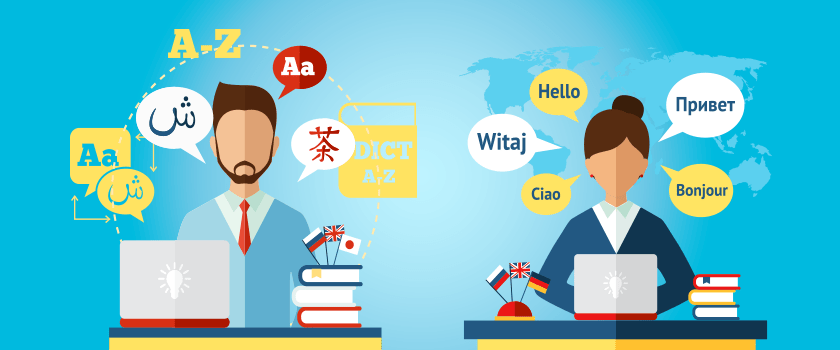Given the fact that the market of the United Arab Emirates (UAE) is highly dynamic and the linguistic and cultural diversity is not only evident but a well-ingrained part and parcel of life, presenting your electronic commerce (e-commerce) site in several languages is not an added value, but a core go-to strategy.
Of Arabic speaking Emiratis and South Asian immigrants, western professionals and international tourists across the globe, the U.A.E is oriented with customers who are more comfortable when asked to shop in their native tongues. As e-commerce is a market worth more than 9 billion dollars in the UAE alone, multilingual customer support is rapidly becoming a competitive advantage among online businesses.
Nevertheless, your Web site translation is not so easy as such translation of words into another language. It should be delicately put together, a complex mixture of accuracy, cultural awareness, adherence to best practices in SEO, and technical performance, to make your site appealing to the large variety of users not restricted by languages.
In this guide, we have also described best practices specific to the UAE e-commerce industry, which can aid businesses to grow their online presence and presence in various languages but also be consistent, build trust, and create a consistent user experience.
Begin at Language Prioritizing and Audience Insight
Prior to translation, determine the most pertinent languages which your audience can identify with. Arabic and English are mandatory in UAE, however, in relation to your product direction and target demographic, it might be relevant to consider including other languages in Urdu, Hindi, Tagalog, and Russian.
Analyze your website statistics in order to find demographics of the visits. Is there any high number of South Asian users? Is the bounce rate high on Arabic speaking users on English only pages? These reflections will guide you on giving your translation efforts a priority.
You must also take into consideration cultural context. As an example, brand skincare companies based in UAE may get more revenues by helping to write in Russian and provide their services to high spending tourists and a service that delivers groceries may get more hits when written in Urdu or Malayalam.
Don’t let word- for-word translation limit you
It is also true that direct translation sometimes cannot capture the tone, both emotional and cultural, which determines the consumer behavior. This is why localization which implies adaptation of the contents to the language, norms, preferences and values of a particular market should be offered.
The example can be taken of currency. When your audience is using English, list your site prices in USD, not by converting it to AED when being used by the Arabic people. Formatting (e.g. Arabic numerals), date formats, and payment preferences should also come to mind. Having a localized checkout experience where local mobile wallets or local credit cards may be used, will create trust and minimize the losses associated with cart abandonment.
They should be culturally valid in terms of images and symbols as well. Concepts that are visually appealing to the western audiences might fail to make sense to the Arabic speaking users and the converse. The localization will help you know that your messaging would be in accordance with the culture, which results in increasing conversion rates.
Emphasize on UX and Navigation Similarity
An uninterrupted user experience (UX) across languages is one of the most underestimated issues with regard to multilingual websites. The structure of the layout and navigation is uniform, and no matter the language, users do not have to get lost in them.
This is particularly relevant in case of RTL languages such as Arabic. The translation to Arabic implies redrawing the elements on the page to support the RTL orientation, such as menus, sliders, and forms. Otherwise, the site can become clunky or half-baked, despite having everything grammatically right.
Also, make sure that your language switcher is not hidden but is most preferable in the top-right corner or navigation bar. It is recommended not to use the auto-translation plugs that especially with not widely spoken languages can provide faulty or otherwise inconvenient translation. A standard translation should be done using professional translators who know the field of e-commerce to retain the tone and product relevancy.
Multilingual SEO, Do it Right the First Time
The work of translating your site is half done and the remaining part is to ensure that the users looking with their search language can actually find your site. It is here that multilingual SEO will be critical. Unless every language version of your site is well optimized, you will definitely miss out on the important organic traffic that you would get as a result of good optimization of your site by search engines.
Firstly, one should know how to apply hreflang tags properly. These tags are useful to search engines such as Google in that it knows which version of your page should be displayed to users based on their language and region preference. In their absence, you would probably have the wrong language page ranking the wrong crowd.
The URL structure should be unique and localized in each language version of your site too. As an illustration, your version in Arabic may be the next example.com/ar/, being easily traced by the notation of other versions. This does not only assist with SEO, but also users’ experience.
Page titles, descriptions, and image alt text fall into the category of metadata and are required to be translated and optimised on a per language basis. It does not suffice to translate only the main body. All factors that make your page visible in a search engine listing must be based on language and search patterns of that particular market.
Different languages should also be researched in terms of their keywords separately. Direct translation of an English keyword might fail to reflect the user query mode in Arabic, French or Urdu. It can be a huge difference to understand how people actually write their phrases in search engines. In most cases, this may involve the real expertise of native speakers or SEO experts who can speak the language and have knowledge of the audience behavior in the digital world.
Ensuring technical infrastructure supports multilingual requirement
A profound technical configuration is behind any successful multilanguage Internet site. Your content management system (CMS) must be able to support multiple languages without reducing its performance level and usability. The most popular options are using the platform (Shopify, Magento, WooCommerce, and WordPress, with the use of such plugins as WPML or Polylang), when any business can provide online services to consumers with multiple languages and cultures.
One should copy and administer contents across various versions of languages through your CMS. This also involves synchronizing upgrades among languages so that the upgrade does not leave anybody behind. The system must accommodate language-specific layout and styles: lay out mirrors, RTL alignment of text and localized navigation paths to right-to-left languages like Arabic.
It is also useful that your CMS has assigned translators the ability to venture into the platform and yet will not affect the design of your site. Such integration accelerates the processes and decreases malfunctions related to the content copying and pasting across other sources. In case of bigger companies that deal with hundreds of SKUs or have multiple campaigns, translation management systems (TMS) may help greatly in streamlining the process. These are tools that track its edits, create consistency, and are able to have scalable multilingual as your business grows.
Test and Refine and Gain Customer Confidence
When you have your multilingual site up, it is vital to continue testing and optimizing. Translation in itself is not sufficient to provide satisfaction between the users. You must receive direct feedback from the persons speaking the target languages, and ask them whether the content sounds natural and it is easy to browse. Place particular focus on product descriptions, checkouts processes and forms so as to make sure that nothing is getting lost in translation.
It is possible to A/B test various variants of a landing page or a localized version of an ad campaign to determine which phrasing, pictorial elements, or call to action seems most effective with which audience. A strategy that grabs attention in English may not be used in Arabic since cultures are different or there could be language differences.
Conclusion
The development of a multilingual e-commerce site which targets the UAE market is not just a programming process that involves translation. It presupposes identifying the people you are targeting, adapting to your local market, developing necessary infrastructure, and making sure that the corresponding versions of your content are both search engine and user friendly.
We have Arabic and English, and although you can go to more languages there, when done the right way it can really expand your audience. It all comes down to recognizing each version of your site prepared in some foreign language as equally important where there is no difference in the brand name, message, and usability.
A properly designed multilingual site in such thriving and technology-savvy land like the UAE is not only an effective way to grow your business but a means to make your brand look wide-ranging, open, and sensitive to culture. That is what might be the difference-making factor in the competitive e-commerce environment nowadays.


